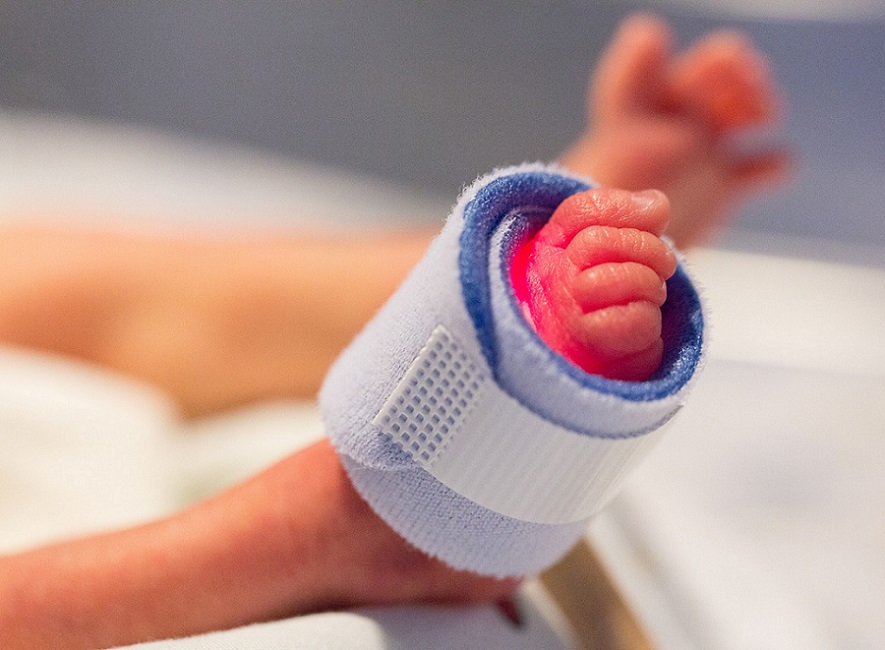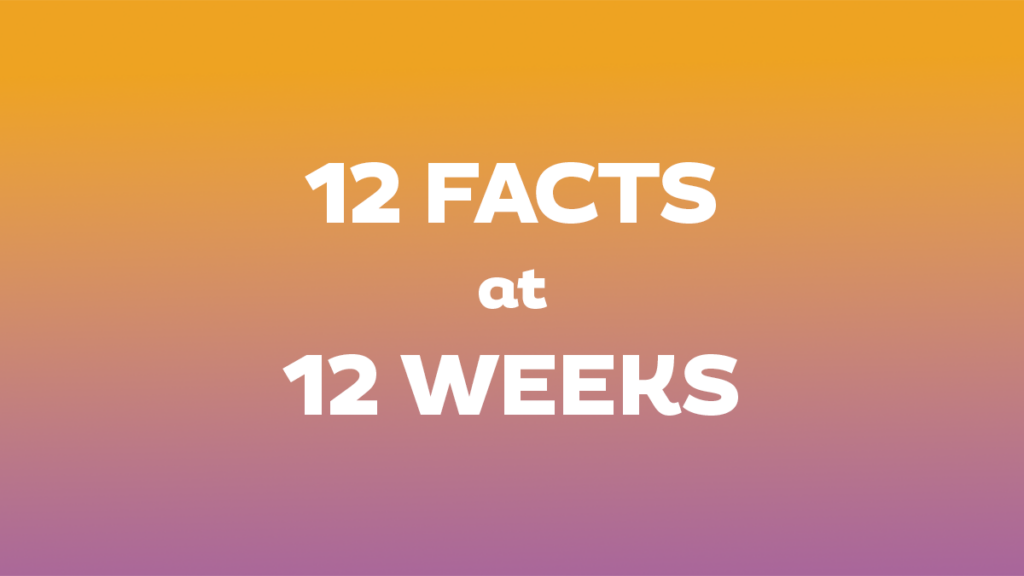At Different Times in Life

As children head back to school, many parents are snapping “first day of school” pictures. This annual event documents not only some interesting fashion trends, but also how physically different we look at different ages. I recently found an older family album that solidified this fact. I had to take a second look to verify that the young woman in the black-and-white wedding photo was indeed a person I know very well, my grandmother. Pictures of her as a young child are more difficult to reconcile with the elderly reality—but then I found a photo that caught a gesture, or something about the twinkle in those eyes that is undeniably her. It’s a reminder that we are more than our physical parts. Mere anatomy and physiology, though incredibly complex, fail to capture or define our character.
Our personality is as integral to who we are as our fingerprints. Admittedly, it is also shaped by experience as opposed to our DNA; yet we do not arrive blank manikins. Some people are inherently more pensive, others are clearly extroverts. When do these personality traits attach to our physical flesh and bones? Having stood in the delivery room of infants born at the edge of viability (currently defined as 22-24 weeks gestation[1], [2], with some survivors at 21 weeks[3], [4]), I have witnessed that our personalities are present far earlier than many are aware. Even when born at a time when the internal physiology is more fetal than not, many premature babies arrive with an intact attitude. This is even easier to identify when there are twins, as I have often overheard nursing staff and parents discussing how one of the twins is the calmer, more easygoing of the two, and the other is the more dominant and temperamental of the pair.
Additionally, infants born at these early gestational ages are aware of and react to their environment. Whether their eyelids are still physically fused (a common finding when born at 22-23 weeks gestation) or the baby is just resting, premature infants recognize their mother’s and father’s voices and in response lift their eyebrows or even their heads. During something called “kangaroo care” when the premature infant is placed skin to skin on their mother’s or father’s chest, studies have documented stabilization of oxygen saturation[5] and heart rates.[6] Other studies have shown that intentionally decreasing painful stimulation and increasing parental involvement correlates to improved outcomes.[7],[8] At the edge of viability, and at a time when most babies of the exact same gestational age are still developing in utero, the NICU is a consistent witness to the personhood of these tiny people.
Despite these medical advances, some still have the unfortunate impression that while in the womb, the baby is just “tissue.” Tissue inadequately reflects the complex, non-stop activity constituting intrauterine life. A human being’s developmental dance is initiated at fertilization, when the maternal egg and paternal sperm combine to form a completely new, genetically unique individual. At first, the repertoire of the dance is limited to cell division and multiplication, but after about two weeks the implanted speck of nascent life begins to behave differently. The cells start to specialize.[9] No longer are they all the same; instead, they become part of specific organ systems. By the end of the eighth week (the embryonic period), a human being has changed from a single cell to nearly one billion cells. Then, from nine weeks through birth (the fetal developmental period), these differentiated cells multiply and move into more recognizable arrangements. “Tissue” fails to describe this remarkable and intricate developmental dance.
The three-dimensional geometric changes in organ development are an underappreciated part of our developmental dance. For example, in the embryonic period, the cardiac muscle rearranges from a tube into a hollow four-chambered, rhythmically beating metronome of life; It’s folding and partitioning will continue into the fetal period, as will the completion of a vast vascular array of macro and micro vascular connections. The literal miles of vessels that are formed must perfectly match the needs of the developing body. Without adequate delivery of oxygen-rich red blood, cell death rapidly occurs (though in utero needs are different from what they will be after birth). Equal in importance to the arterial system is the forming venous system through which oxygen-poor blood returns to be resupplied with oxygen for the next lap around the body. Meanwhile a different tubular dance is forming and moving into, and then back out of, the umbilical cord: This is the premature bowel and it literally moves out of the abdominal cavity into the umbilical cord, turns 90 degrees clockwise, and then migrates back. This is the dance of the developing lower gastrointestinal tract. It too must be appropriately supplied with nourishment and the arterial/venous system must take its correct position despite all of this movement.
Adding to the developmental dance, the neurologic system changes from a flat strip into the complex spiderweb of nerves connecting the furthest ends of the body to the central command center, the brain. The brain itself changes shape from a relatively smooth ball to a mountainous range of caverns and hills (sulci and gyri), all with specific relevance for governing everything from breathing in the base or brain stem, to movement of skeletal muscle, to emotions and memory, as well as the capacity to create poetry and theorize about the dimensions of time and space. Human formation during the embryonic and early fetal periods may not resemble later images of the same person, however, these unfamiliar earlier snapshots are dynamic and definitely not mere pieces of disposable tissue.
Because of improvements in neonatology, it is our privilege to meet and care for human beings at increasingly younger gestational ages. Whatever one thinks politically about Roe v. Wade, the theory behind the Supreme Court ruling that permits the intentional destruction of humans we now regularly save is obsolete. Whether the premature baby is in the womb one moment or in the neonatal team’s hands the next, the child is the same and is a real person. In the same way that the timeline of photos taken after birth illustrates how humans change in appearance, we can now obtain photos prior to birth, too. Importantly, there are no moments in our pre- or postnatal timelines when we are ever anything other than a person; there are no interludes when we become a lily pad or a lemur. Though always the same human being, from fertilization to death, different words are used to describe the same process. “Aging” is how we refer to people’s changes in the later portion of life, and “developing” is used to describe what happens earlier on. When developing is used to describe what occurs in a toddler, there is no controversy; nor do most believe that a still-developing toddler who is reliant for survival upon his or her mother can intentionally be harmed when he or she is inconvenient. That would legally be called abuse. Yet the same legal protection does not extend to the same person while developing in utero. If still in utero, the 1973 ruling in Roe v. Wade says a reasonable solution to an unexpected pregnancy is the intentional death of an unborn child.
The varying degrees of rights possessed by preborn infants changes according to what trimester of pregnancy they are in.[10] The division of a pregnancy into trimesters is an idea that has nothing to do with science or physicians; trimesters were created by the court. According to the science, the parents, and the neonatal delivery room teams, the infants cared for in the NICU, who 20 seconds before were still in the uterus, are real human beings—yet current laws fail to defend them equally. It is our moral imperative to return to providing equal protections to every human being under the law. Importantly, if the restrictions for protecting preborn babies are restored, we should take care not to do so at the expense of his or her vulnerable mother. This would simply be a different and tragic error. The mother-infant dyad needs to be supported and protected—perhaps even more urgently when one of the members of that dyad is suffering or in jeopardy.
Because life is sacred, what Roe v Wade legally introduced is a medical and ethical paradox. It permits some doctors to legally and intentionally kill an infant that other doctors are medically and ethically obligated to save. This law fails to reflect the medical advances made since 1972 and will likely become only more problematic as the ability to meaningfully intervene for increasingly premature babies continues improving. Ethical laws equally and equitably safeguard all citizens; this particular law does not. Ethically and humanely changing the law to reflect modern advances in medical practice would improve the entire mother-infant dyad.
[1] Raju, T. N. K, Mercer B.M., Burchfield D.J., Joseph G.F. 2014. “Periviable Birth: Executive Summary of a Joint Workshop by the Eunice Kennedy Shriver National Institute of Child Health and Human Development, Society for Maternal-Fetal Medicine, American Academy of Pediatrics, and American College of Obstetricians and Gynecologists.” Journal of Perinatology, 34, no. 5: 333–342., doi:10.1038/jp.2014.70
[2] Rysavy, Matthew A., et al. “Assessment of an Updated Neonatal Research Network Extremely Preterm Birth Outcome Model in the Vermont Oxford Network.” JAMA Pediatrics, vol. 174, no. 5, 2020, doi:10.1001/jamapediatrics.2019.6294.
[3] Elassar, Alaa. “The World’s Most Premature Baby Has Celebrated His First Birthday after Beating 0% Odds of Surviving.” CNN, Cable News Network, 19 June 2021, www.cnn.com/2021/06/19/us/worlds-most-premature-baby-birthday-trnd/index.html.
[4] Today Show. “Born at 21 Weeks, This May Be the Most Premature Surviving Baby.” TODAY.com, 21 Nov. 2018, www.today.com/health/born-21-weeks-she-may-be-most-premature-surviving-baby-t118610.
[5] Hunt F. “The importance of kangaroo care on infant oxygen saturation levels and bonding.” J of Neonatal Nursing 14(2):47-51
[6] Cong X et al. “Kangaroo Care Modifies Preterm Infant Heart Rate Variability in Response to Heel Stick Pain: Pilot Study” Early Hum Dev. 2009 Sept;85(9):561-567
[7] Altimier, Leslie, and Raylene M. Phillips. 2013. “The Neonatal Integrative Developmental Care Model: Seven Neuroprotective Core Measures for Family-Centered Developmental Care.” Newborn and Infant Nursing Reviews, 13, no. 1: 9–22. doi:10.1053/j.nainr.2012.12.002.
[8] Fathi O, Nelin LD, Shepherd EG, Reber KM. Development of a small baby unit to improve outcomes for the extremely premature infant [published online ahead of print, 2021 Mar 12]. J Perinatol. 2021;1-8. doi:10.1038/s41372-021-00984-0
[9] Moore KL, Persaud TVN. “The Second Week of Human Development.” Before We Are Born, Essential of Embryology and Birth Defects, 4th editions. WB Saunders Company (Philadelphia). 1993.
[10]Arzuaga BH, Lee BH. Limits of Human Viability in the United States: A Medicolegal Review. Pediatrics 2011:128(6);1047-1052
























